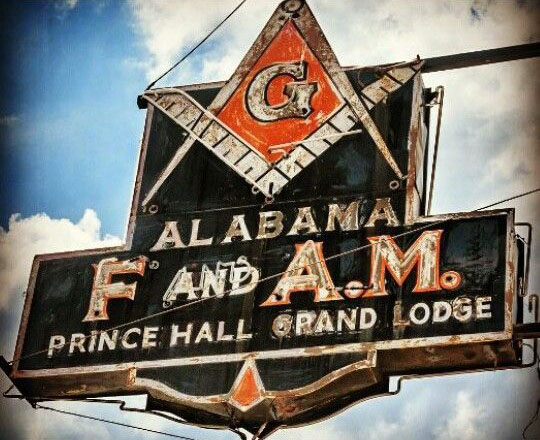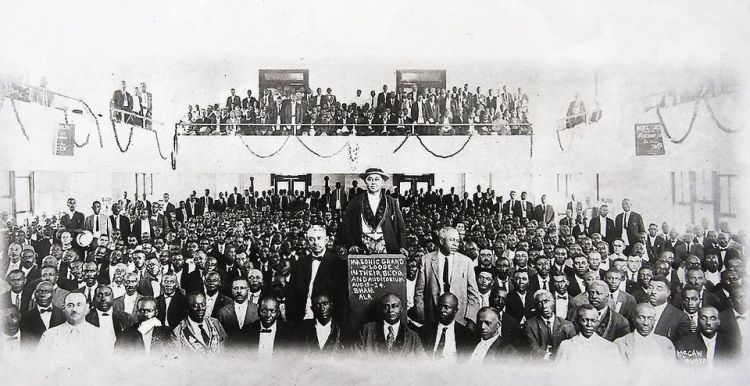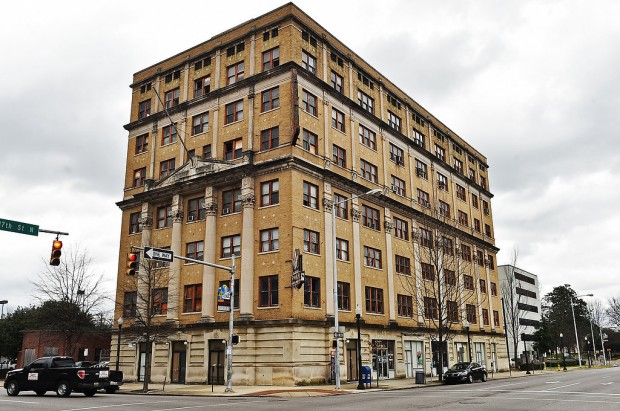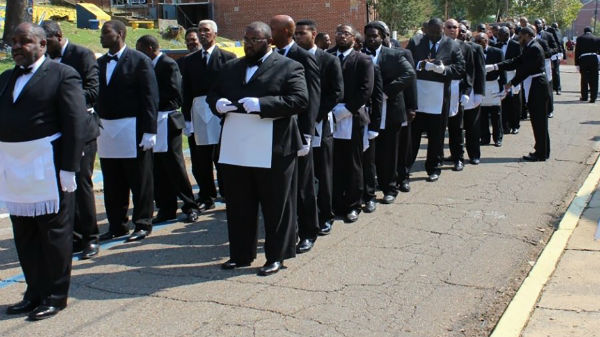“Colored” Masonry in the state of Alabama came into existence approximately in 1867, just two years after the close of the civil war. As early as 1869, there were known to be in the state of Alabama eight or ten properly and traditionally recognized local lodges of Masonry. These lodges operated under charters issued by the states of Ohio, Tennessee, Missouri and what was then known as the National Compact Grand Lodge. In 1870 the first Colored Grand Lodge in the state of Alabama was organized.
On Tuesday, September 27, 1870, pursuant to previous notice and call, the Masters, Wardens and other legal representatives of the hereinafter named subordinate lodges, met in solemn convention in the colored Masonic Hall on the corner of Water and St. Anthony Streets in the city of Mobile, Alabama, and formed a Colored Grand Lodge for the state of Alabama, said Grand Lodge being known and styled as the Independent Most Worshipful Grand Lodge, Ancient Free and Accepted Masons of Alabama. The lodges attending this convention were as follows: Olive Branch Lodge No. 1, Strangers Lodge No. 27, and Hiram Lodge No. 3, all located in Mobile and operating at that time under the jurisdiction of the Grand Lodge of Ohio. During the year of 1874,there was formed also in the state of Alabama another Colored Grand Lodge known as the National Compact Grand Lodge. These two Grand Lodges operated independently in the state of Alabama until August 1878. On the second Tuesday in August, being August 13, 1878, in answer to a call addressed to each and all of the subordinate warranted lodges in the state of Alabama, having the genuine work of Masons at heart and working under warrants of the National Compact and the Independent Most Worshipful Grand Lodge, Colored, of Free and Accepted Masons of the State of Alabama, a solemn Masonic Convention was held in which convention the two Grand Lodges consolidated to form what is the present Grand Lodge of Alabama, adopting the name Most Worshipful Grand Lodge, A. F. & A. M. of Alabama, Prince Hall Affiliation. The name was later changed to Most worshipful Prince Hall Grand Lodge, F. & A. M. of Alabama.
While the present Prince Hall Grand Lodge of Alabama reckons its age from the date of this consolidation, in reality the Grand Lodge of Alabama, Prince Hall Affiliation, dates from September 27, 1870. Prior to the year 1867, the following ten Colored Lodges were known to be properly organized and operating in the state of Alabama: Olive Branch Lodge No.1; St. John Lodge No.2; Hiram Lodge No.3-all of Mobile, Alabama and working under the Jurisdiction of Ohio; St. Mark Lodge No.4 of Selma, Alabama, and St. Matthew Lodge No.5, of Eufaula, Alabama, working under the National Compact Grand Lodge; Evening Star Lodge No.6, of Huntsville, Alabama working under the Jurisdiction of Tennessee or the National Compact Grand Lodge; King Solomon Lodge No. 7 and Rising Sun Lodge No. 8, both of Montgomery, Alabama, working under the National Compact Grand Lodge; Golden Rule Lodge No. 11 of Opelika, Alabama, and Mt. Moriah Lodge No. 12 of Talladega, Alabama, working under the Jurisdiction of Missouri or the National Compact Grand Lodge.
At the time of consolidation, The Most Worshipful Grand Lodge F. & A. M. of Alabama, Prince Hall Affiliation, was composed of 22 warranted lodges and a membership of approximately 300. The Most Worshipful Prince Hall Grand Lodge, F. & A. M. of Alabama, is now composed of 235 actively functioning subordinate lodges with a membership of approximately 6,000.
In addition to an educational fund that provides scholarships to students entering college as freshmen, The Most Worshipful Prince Hall Grand Lodge, F. & A. M. of Alabama, has two distinct outstanding notables: the strength and carefulness with which the foundation of our Order was laid by the pioneers among Colored Masons in the state of Alabama and the material superstructure built on this foundation by the Masons of the past 75 years. The ritualistic work and the general conduct of the Order under these pioneers was such that Colored Masonry in Alabama received the merited the respect and esteem of the vast majority of the citizens of Alabama, regardless of color or creed. This material accomplishment is a source of pride and inspiration to the entire African American race.
As the major staple of the Order, the physical properties owned by the Grand Lodge include the flagship corporate office building, a fine seven-story office building, located in the downtown section of Birmingham, Alabama. It sets in the midst of prime real estate, one block from a multi-million dollar federal courthouse office tower and within walking distance of other major downtown office complex facilities.
It was under the leadership of the fifth elected Most Worshipful Grand Master since consolidation, Walter T. Woods, that the Masonic Temple was built. Two African American architects, Robert Robinson Taylor and Louis Persley designed the Temple Building. In 1922, construction of the Most Worshipful Prince Hall Grand Lodge, F. & A. M. of Alabama Temple Building began at 1630 Fourth Avenue in Birmingham, Alabama. At the time of its erection, the Temple Building was the largest and best equipped state-of-the-art luxurious building built by and paid for by Negroes in the entire world. There have been no debts or encumbrances of any kind or description on the property. The building has not only paid its own expenses, including repairs and improvements but has been out of small annual profits to contribute to the Mortuary Account of the Endowment Department, from which account widows and orphans are paid their death claims. This seven-story Mannerist-influenced, Renaissance Revival style building was constructed by the Windham Brothers Construction Company.
In addition to housing, the state headquarters for Prince Hall Masons and the Order of the Eastern Star, the Temple Building served as the exclusive social and cultural center for the city’s African American community for many years, i.e., formal meeting space, for the conduct of business activities, as well as concerts and formal social affairs. The State of Alabama Department of Archives and History credits this building for creating the second flurry of buildings by African American businesses in the city of Birmingham in the early 1920s. Designated on the National Register of Historic Places as part of the “Fourth Avenue Historic District” in 1982, this significant structure has served the Birmingham community and the general Grand Lodge for 96 years. It housed professional offices for doctors and lawyers, retail and restaurant vendors and other prominent African American community leaders and organizations. Excluded from white owned and operated downtown public and private facilities, hotels, clubs and restaurants due to the American apartheid/Jim Crow systems, the African American community used the Temple Building to accommodate the need for collectively housed professional offices.
As one of his last acts in the Oval Office, on January 12, 2017, President Barack Obama signed an executive order establishing the Birmingham Civil Rights National Monument which included the A.G. Gaston Motel, Sixteenth Street Baptist Church, Bethel Baptist Church, the Birmingham Civil Rights Institute, Kelly Ingram Park, the Fourth Ave. business district, and the Most Worshipful Prince Hall Grand Lodge Masonic Temple.






